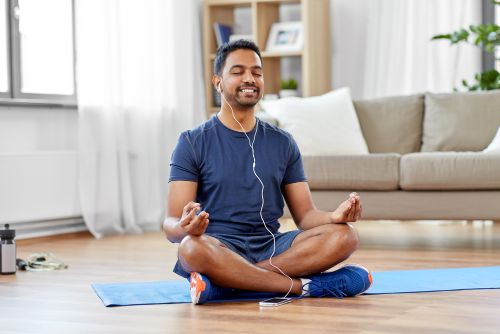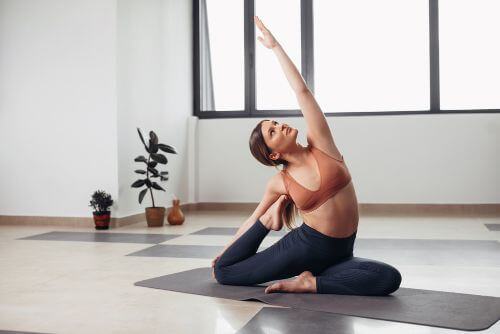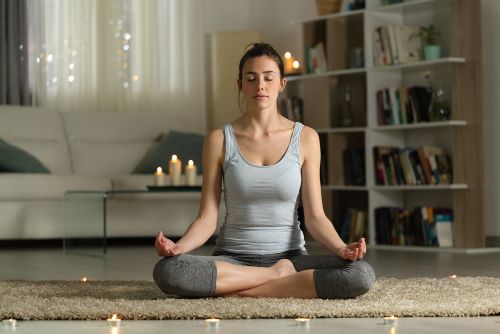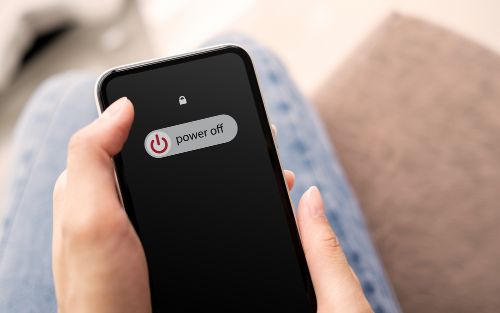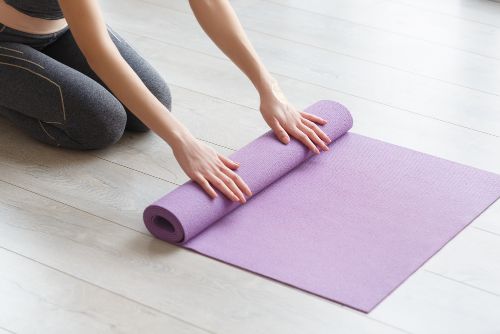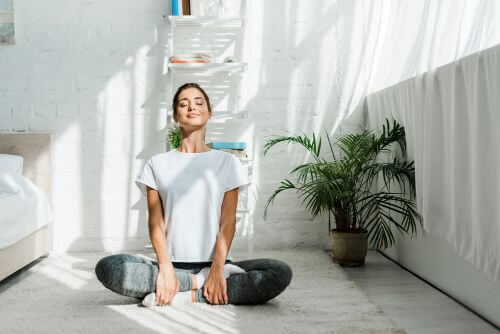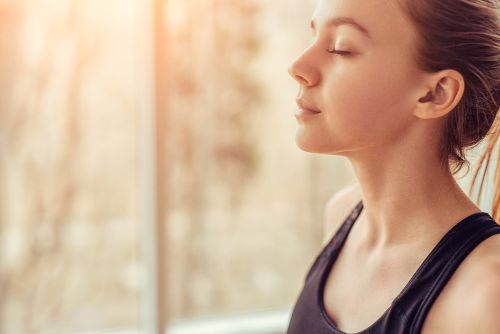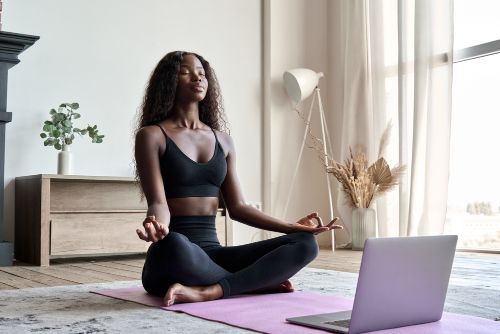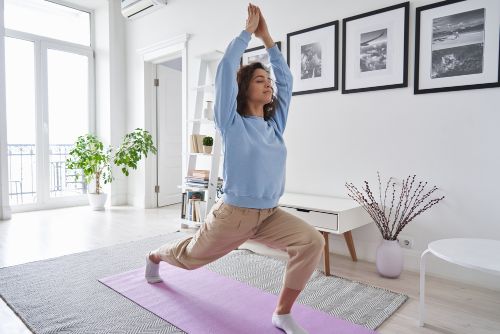Despite being around for centuries, yoga has recently become one of the fastest-growing practices over the past decade. It’s estimated that around 300 million people regularly practise it, which is amazing!
If you’re new to yoga, you may feel that it’s difficult to get started, but the beauty of this practice is that anyone can do it, regardless of your fitness ability or experience.
For those wondering how to start yoga at home, you’ve come to the right guide as we’ll be giving you a full rundown for starting a healthy routine.
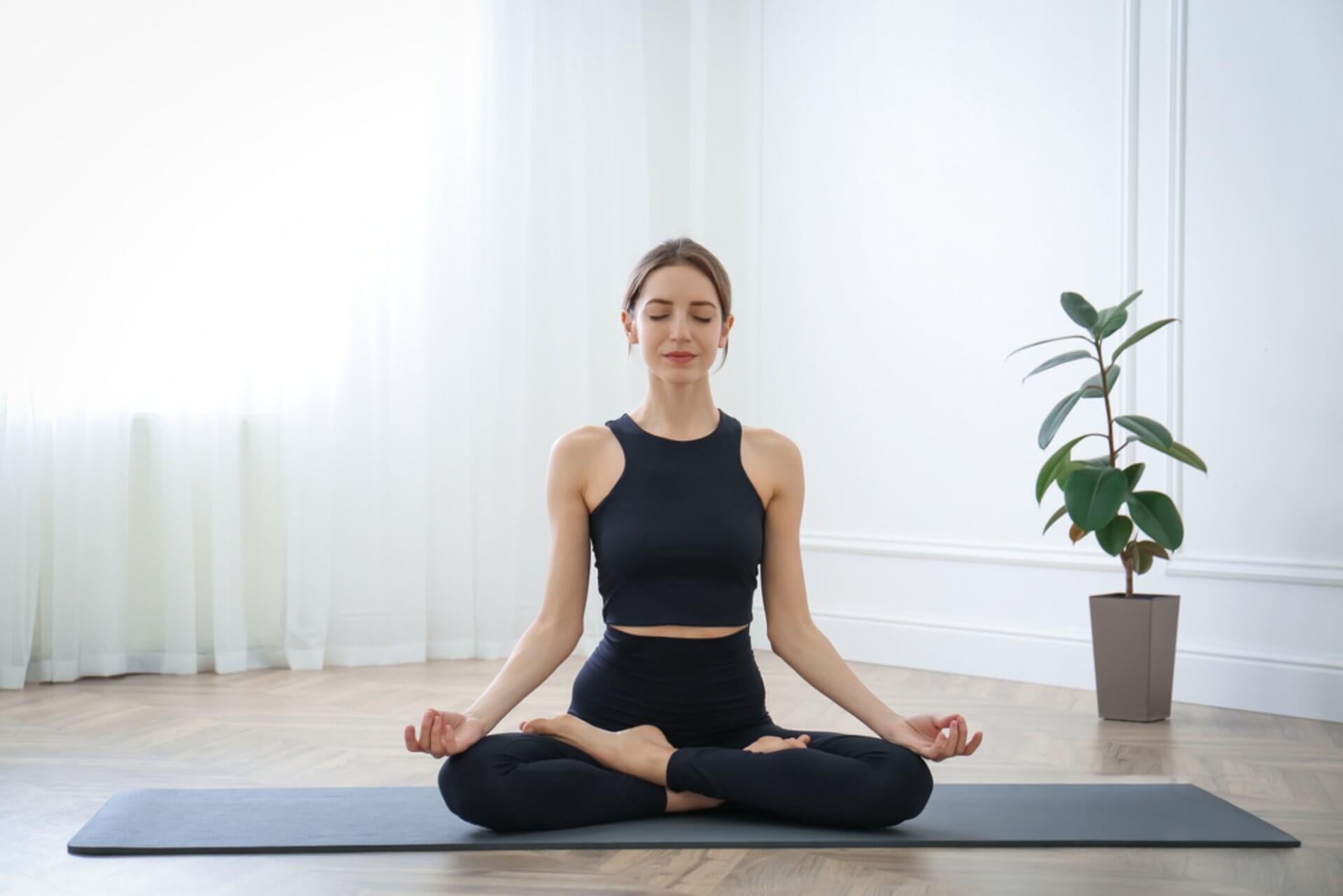
The Benefits Of Yoga
There are so many benefits of practising yoga on your physical, emotional and mental well-being, and even doing it for 15 to 30 minutes a day can work wonders for your body and mind!
Below, we’ve listed some of the key advantages of yoga practice:
- Helps improve flexibility, strength, and balance.
- Reduces stress and anxiety.
- Increased mindfulness.
- Enhanced flexibility and mobility.
- Improved sleep quality.
- Boosts energy levels.
- Enhanced body awareness.
How To Start Yoga At Home
Whilst practising yoga at home seems pretty easy, it’s not just about rolling out your mat and getting in position, many poses require a lot of body strength and balance which takes time to develop.
Not to mention, it’s also important to focus on your breath when practising yoga, and this can be a hard thing to master, especially if you’re a beginner.
If you’re wanting to get into a successful yoga practice at home, carry on reading our tips and tricks to find out!
1. Create A Comfortable Environment
Whilst yoga can be done anywhere and even without a mat if you wish, you should try to create a space which is peaceful and inviting.
Like the saying goes, a tidy space is a tidy mind, so you’re more likely to feel zen when rolling your mat out and practising poses in a clear, uncluttered space.
Try to practise yoga in a space in your home which is spacious so you’ll have plenty of room and won’t bang into anything like chairs or tables.
You can even dim the lights, light some incense and candles, and pop on your favourite mindful playlist for the ultimate vibes.
2. Limit Your Distractions
Just like any workout, you should limit distractions when practising yoga which means turning off your phone or muting your notifications.
Yoga is an exercise that focuses on the mind-body connection and when practising, it should be a time of day where you focus on yourself.
So, it’s also important to limit any distractions racing through your mind, such as, don’t think about your long to-do list or other worries.
Instead, take the time whilst practising yoga at home to be fully relaxed and mindful.
3. Purchase Your Yoga Accessories
If you don’t already have one, you’ll need to grab a yoga mat and some suitable attire for practising in.
You may be in your own home, but it’s still a good idea to wear fitness clothing which is made from breathable materials when doing yoga.
When you get more into it and want to up your yoga game, there’s plenty of accessories out there like yoga belts and innovative yoga blocks.
4. Establish A Routine Which Works For You
It’s important to establish a routine which works for you and your schedule when practising yoga.
Such as, if it works better for you to do it in the morning before work then do that, or if it works better to do it after you get in then go for it.
If you don’t usually do yoga, instead of trying to jump into becoming a pro who practises everyday, start small and try to do it everyday.
If you don’t enjoy the process and force yourself to do too much at once, the chances are you’ll probably stop, so work yourself up.
5. Focus On Your Breathing
Focusing on your breathing is a really important component of establishing a successful yoga routine.
When you step onto your yoga mat, you’re entering a space where the outside world fades away, and you’re invited to take a moment to close your eyes and tune in to the rhythm of your breath.
As you move through different yoga poses, try to synchronise your breath with each movement. Inhale as you open up, expand, or lift, and exhale as you fold, contract, or lower.
Whilst exhaling, you should let go of any tension or worries, allowing yourself to fully embrace the present moment!
6. Listen To Your Body and Mind
We all have our own physical and mental limits, so make sure to listen to your body and mind when practising yoga.
If you’re struggling to hold a specific pose, make sure to adjust your body and respect your own physical limitations, you shouldn’t overstretch yourself as this could lead to an injury.
Over time how deep you go into a pose or how far you push will change as you get more experienced with yoga, so don’t try and overwork yourself.
Ultimately, yoga is just as much about listening to your mind too, so pay attention to your breath, your body, your mind, and energy levels.
7. Eat Just Enough
When it comes to how to start yoga at home, we’d suggest making sure you eat just enough, which means not too much nor too little.
Whilst you should ensure you have eaten enough so that your energy levels are up and you’re not hungry, you don’t want to eat a huge meal and start practising as you’re not going to be comfortable getting in certain postures.
If you do need to eat prior to exercising, you should wait a few hours (around 2-3) after eating before practising yoga.

8. Don’t Compare Yourself To Others
It’s easier said than done, but try not to compare yourself to other yoga go-ers.
Whether it’s looking at people on Instagram, videos on TikTok or even comparing yourself to people in classes, it’s important to focus on your progress and yours only.
Just like with anything, there will be people who are more experienced than you at yoga, and focusing on your own practice is the most important thing.
Hopefully our tips have helped you to ease into the routine of practising yoga at home.
We hope this post encourages you to take up yoga whilst living in our co-living accommodation, remember there are tons of benefits!
Read next: 8 Fun Ways You Can Have Fun Exercising This Summer.

